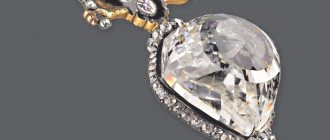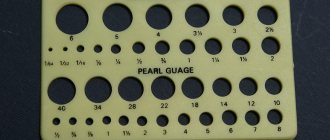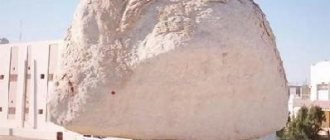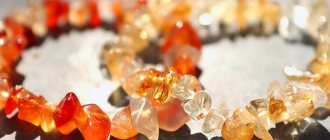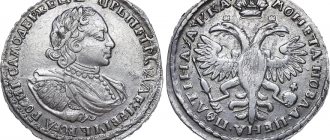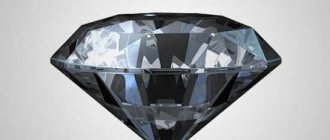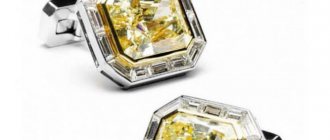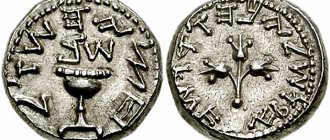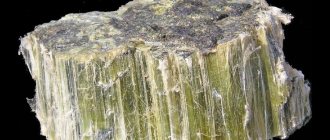What types of deposits are there?
Jewels include rare, beautiful minerals. There are not many of them, the most famous are rubies, diamonds, sapphires, and topazes. A large group consists of ornamental minerals, which look no less beautiful and are used to make jewelry.
Each mineral has its own deposit, depending on the composition of the surrounding rocks. As a rule, the development of these deposits has been going on for several hundred years; new deposits are rarely discovered. Known places for mining gemstones:
Deposits of precious stones
- Yakutia and Namibia - diamonds;
- Iran - turquoise;
- Pakistan – rubies;
- Sri Lanka – sapphires and rubies;
- Ural - topazes.
There are three types of deposits: mine workings, open pits, and placers. In the latter case, minerals are separated from rocks during the process of erosion and are carried away by water flows. The extraction of stones in placers is carried out by hand washing.
Mining workings are underground mines in which precious stones are mined using manual labor. First, an exploration mine is built to determine the quantity and quality of minerals.
Open pit mining is the mining of minerals and minerals in layers of rock. As the quarries are developed, they dig deeper and deeper. The largest quarry is located in Chile, its size is 3x4 m, depth - 850 m. The largest diamond deposit in Russia is located beyond the Arctic Circle, this is the Udachnoe quarry.
Udachnoye Quarry in Russia
Mining enterprises
As a rule, a deposit is discovered by accident, without the use of technical means or scientific base. Scientists are specifically looking for only the most expensive stones – diamonds. A mining enterprise is being built on the site of deposits of precious stones.
Types of mining enterprises:
- Mines are large enterprises for the extraction of minerals underground or in an open pit;
- Mines – mines and quarries for extracting gems;
- Mines are mines for extracting minerals, dug by hand.
Video: The rarest and most expensive stones in the world that are worth seeing
Collectors are willing to pay exorbitant sums for these minerals.
Have you ever tried walking along a country road after it rained? This is the best time for a walk for those people who are passionate about precious stones. Sometimes you can find rare stones under your feet that cost a fortune. After all, material for filling roads is usually brought from mountainous regions, where a variety of minerals are found. The video below talks about the most unique and expensive stones in the world. By the way, you can learn about how precious stones are mined in Cambodia from our other material .
Tanzanite is found a thousand times less frequently than diamond. As the name suggests, it is recommended to look for this stone in Tanzania. Tanzanite is a mineral found at the base of Mount Kilimanjaro. This stone began to be mined relatively recently - in the 60s of the last century. The price per carat is about 2 thousand dollars. The fact is that there is very little tanzanite on our planet, therefore, even if you have enough money to buy, you cannot be 100 percent sure that the stone will end up in your hands.
To a person who does not understand the topic, many stones may seem precious, although some of them simply look beautiful without being so. A stone doesn't have to be precious to attract the attention of collectors. Taaffeite is a semi-precious stone. Its price ranges from $500 to $2,000 per carat. The peculiarity of this stone is its variety of colors. In nature, there are a variety of color options for taaffeite. The rarest is purple or lilac. Madagascar and Indonesia are the main places where this stone can be found.
Painite is quite difficult to find in nature. It was even listed in the Guinness Book of Records as the rarest mineral in the world. The name of the mineral comes from the name of the scientist Arthur Payne, who is its discoverer. Painite is unique not only because it is the rarest mineral, but also because it contains 5 chemical elements. All elements are in a kind of synthesis with each other, which gives the stone a special charm. Until 2005, only 25 painites were found on the entire planet. The problem with painite is that it is very rarely found in its pure form, so the richest collectors are not chasing diamonds, but pure painite. Which stone from the selection did you find the most unusual and interesting?
You can look at the giant stones near the water, which turned out to be ancient animals, in our other material .
Available methods of mining gems
The methods of mining semi-precious stones have remained almost the same as in ancient times. They dig a mine with the help of shovels, lifting rocks in baskets on ropes. Usually work begins next to a river in which rocks can be washed. During the washing process, workers find 1-2 gems per basket of rock. After this, the process is repeated from the beginning. Finders sell their finds at auctions or local markets. Specialists process them and deliver them to stores.
Gems without impurities are valued on the market. Only a specialist can determine this. He carries out preliminary processing and cutting of minerals. For example, sapphires are heated to impart a beautiful hue. The master must know the properties of stones in order to distinguish a piece of jewelry from a fake.
Production in Sri Lanka
In Sri Lanka, stone mining is done by hand. Of the automatic means, only pumps are used that pump out groundwater. The mines are dug right in the rice fields. Excavators and other equipment are not used, as they leave behind lakes and swamps.
Sri Lanka is known for the fact that the entire island contains a huge amount of minerals. Half of the known types of stones used for jewelry are found here. Development is carried out by private seekers under a special license, which must be paid annually.
Primitive mining methods
The easiest way to develop precious stones is to collect placers along mountain rivers. Crystal growths are on the surface and can be seen in rock crevices. They are knocked down with a hammer and chisel; in some cases, jackhammers and explosives are used. Explosives are rarely used because they can damage valuable minerals.
Another method is mining at the mouth of the river. It is specially accelerated so that the water flows faster. The workers stand in the water and muddy the bottom with long poles. Light sandy components are carried away by the water, and semi-precious stones remain at the bottom.
The most difficult way to obtain gems is to build deep mines. They are dug using special equipment, and ceilings are built so that the walls do not crumble. The entrance is covered with a shelter from the rain. Groundwater is pumped out with pumps. Natural stones lie in a sandy layer, and mining is carried out in it. Horizontal workings occupy several meters underground.
Mined Gems
Use of explosives
Mountain adits are built in hard rock using explosives. This method is time-consuming and labor-intensive, so it is used only if there is confidence in the deposits of precious stones. Typically, gem mining is combined with geological exploration and mining of other minerals.
The main problem of all mines and mines is theft. They not only bring losses to prospectors and mining companies, but also reduce the price of gems on the market. Therefore, serious companies carefully guard their mines.
Gemstone mining takes place in rock formations, estuaries and open ground. In some countries, independent mining is prohibited; only industrial enterprises can do this. Other countries allow such fishing upon purchase of a license.
Gems of the Urals. The nuances of searching for colored stones
May Day is the time when timid green grass and foliage are just beginning to peck in the Ural forests, when any, even the most insignificant change in the field situation catches your eye, when the top layer of soil is warmed up to the point of a spade, and the streams are noisy with melt water, carried into the rivers destroyed parts of veins with semi-precious stones. This is the time of the most productive, most “delicious” geological exploration. In its classic form, with many kilometers of marches, inspection of natural and artificial exposures, digging, washing and everything that allows an inquisitive, prepared eye to detect signs that have a chance of finding the root manifestation of the stone. Taking time off and adding them to the holidays, we headed for the previously unexplored Aduy territories. The release took place in an abandoned crushed stone quarry, buried among the tuffs. A superficial examination under the beginning of the rain brought the first finds: greenish crystals of an unknown mineral were adjacent to the reddish feathers of another individual on quartz. After taking a few photos, we moved towards the main goal of our May walk.
The second discovery, which made us surprised, happened half an hour later, when Andrei, leaning towards the washed road rut, emotionally raised... his cat's eye! The stone shone through with a deep green color, warming the frozen soul. Having congratulated each other, we did a little digging and, not seeing immediate prospects, moved on, paving the way off-road under the rays of the setting sun.
We stopped for the night already at dusk, near one of the tributaries of the Aduya. We had dinner under the crackle of a good fire, discussed the finds and further searches, bending over the map. I slept perfectly on the first night - I was lulled by the streams of the stream carrying dark spring water to Adui. In the morning we set out on the route - and again a find! Chrysoprase flashed with a green light at the root of a fallen tree. After some digging, we discovered a collapse - but there was not much good, rich colored stone. This day was completely devoted to fishing on my favorite river. Of course, there were some adventures: the sequence of events formed an eerie story that showed how much a person depends on circumstances. Having cast unsuccessfully, I broke the float, which floated from the pool to the Adui rapids. Having estimated the trajectory of the movement, I decided to save him - the situation with the floats in the fishing arsenal was tense. A log lay across the main stream, from which I decided to begin the rescue operation. Reaching for the float, he very unsuccessfully leaned on a branch, which, of course, turned out to be rotten. It took a second to freely fly into the water of Adui and a second to emerge and take a breath of air. The next moment the jet hit me in the back and threw me under a log. Everything would have been fine, but under the log there was a natural trap of snags and branches, and I was simply slammed into it. Most likely, I would have remained there, sank into obscurity: there was a tree on top, making it difficult to raise my head, an interweaving of branches on three sides, if at the last moment I had not caught my hand on this wet trunk. Pulling himself up against the current, he straddled a log and climbed ashore, slightly shocked by what had happened. Thanks to Andrey, who instantly understood the situation. Seeing my wet body carrying a kettle of fish and a fishing rod along the shore, he brought firewood, lit a huge fire and made a clothes dryer while I poured the water out of the former camera and took out the battery from the former phone.
I dried myself out for a long time, all the time sipping on a mug of hot tea and emotionally experiencing what had happened. Andrey gave me a warm jacket and trousers from his supplies, and the fishing continued. In the evening, having very successfully set up the awning, we went to bed under the beginning of the rain, which, turning into a good downpour, rinsed the forest for almost a day. With the first rays of the sun, we put on our raincoats and, grabbing the necessary tools, went out to the circle. We walked and wandered through the forests until the evening, even reaching the Toshi mines, where we examined the relatively fresh and old grandfather’s pits. Andrey found a nice crystal of dried feldspar from a weed. That day we walked about twenty kilometers, crossing the spring flood more than once. In one of the tributaries they decided to wash it and look at the heavy fraction. They scooped it onto a plate straight from the riverbed, and... at the bottom there was gray-violet corundum, somewhat similar to the samples from Koltashi. Having carefully examined the sediment, we also found a stamen of cornflower blue, transparent corundum. After looking at each other, they scooped up another portion. The result is two small corundums. What is the content of the material in the placer if we got four stones from two rafts, not even from a raft? Hurricane content! Once again we congratulated each other on the discovery of a new manifestation. Or let’s put it this way: with the discovery of a manifestation not indicated in official sources. Believe me, this “admission” did not dim the joy of the find. In the evening, going to bed under the tent that had become so familiar after the rain test, we received another emotional shock. Wrapped in a sleeping bag, I was lying in a relaxed state, thinking about the little things in life and remembering what date it was today, when I heard a characteristic roar. He stopped breathing, turning his attention to his ears: at the edge of his consciousness he noticed that Andrei had also stopped tossing and turning in his sleeping bag. A minute later the grumbling was repeated, much closer to the camp. -Andrey, bear! – I wheezed, jerking my body out of the cozy sleeping bag. -I hear... Is your knife far away?.. This simple dialogue preceded the last night on our beloved Hell before leaving. Having tossed and turned and looked with all our eyes into the darkness, we fell asleep without waiting for the owner of these places. They weren't eaten, they weren't bitten either. In general, as they say, we got off with a slight fright. The next day was marked by the transition to the drop site and a strange incident that occurred during the march. I was running diligently along the turnouts when I heard Andrey: - Sash! This is how he usually speaks briefly about the importance of the moment. I picked up the probe and galloped towards him, but was too late. It turns out that he saw someone strange in the middle of the marshy area, on the shore of which we were resting. In general, the height of a small man, bright white, who, at first, walked in one direction, and then, turning on the dashing afterburner, rushed back. And all this was done in the middle of a swamp! ...At the quarry, since the dumping site coincided with the dumping site, they walked a little and as a result, a quartz vein was found with some strange, split quartz crystals. Quite, I must say, spectacular.
On this positive note, we set sail for our native land. The trip was a success. I wonder if it was ever different?
